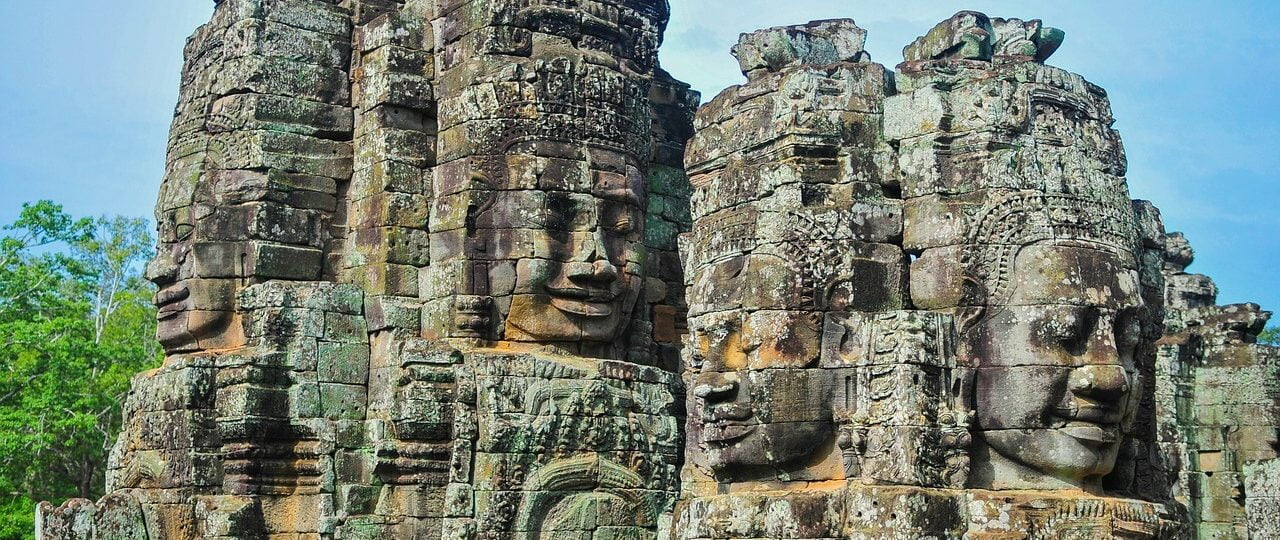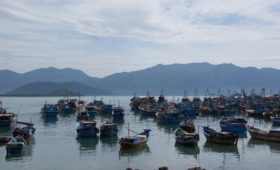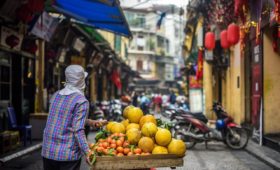The words Indochina, or separately named Vietnam, Laos and Cambodia still throw fear into many people today. So before we go into the regions brief history, its current history is of being one of the safest & friendliest places for tourists on the planet as well as being as fascinating as anywhere else.
Indochina 21st Century
As well as the wonderful food, you get your own history lesson if only you give it a chance. Tourism has already turned Siem Reap from a small sleepy town to the large and busy hub we see today, and may eventually take on the same problems now being seen in places like Venice & Barcelona if this growth continues.
So you need to shake off your unfounded doubts and get there now to experience it all before the fast-food giants also arrive.
Cheap, safe, friendly and the food is as good as anywhere on earth. The great local beers only add to the holiday enjoyment either during happy hour in Phnom Penh or beside the Mekong river in Luang Prabang among other relaxed places.
Do not wait to visit if you want the genuine thing.
Let’s Go Back
French Indochina was the collective name for the French colonial regions of Southeast Asia from colonization in 1887 to independence and the subsequent Vietnam Wars of the mid-1900s. During the colonial era French Indochina was primarily made up of, today’s Vietnam, Cambodia & Laos.
But these 3 countries all have far longer histories dating back as far as 2000 B.C. They were influenced in earlier times by both India & China. There were many Kingdoms over the centuries. More recently The lesser-known Champa kingdom in Vietnam around the 2nd century A.D. Today you can still see some Champa towers.
Of course, the more famous kingdom is of the Angkor period in Cambodia dating from 802 A.D. until 1351. Much of which can still be seen today in all its awesome glory. A worldly must-see.
As for Laos, the Lan Xang kingdom dates back to the mid-1400s.
There have been numerous conflicts in the region both between themselves and more recently with both the French and then the American war. The most recent American war, 1964 to 1975 caused Cambodia and Laos especially back into the stone age almost.
Laos as a neutral country became the most bombed country per capita in history. From 1964 to 1973, the U.S. dropped more than two million tons of ordnance on Laos during 580,000 bombing missions—equal to a planeload of bombs every 8 minutes, 24-hours a day, for 9 years. Called The Secret War.
Likewise Cambodia; The U.S. dropped millions of tons of bombs on Cambodia, exceeding the amount it had dropped on Japan during WWII (including Hiroshima and Nagasaki) by almost a million tons. During this time, about 30 percent of the country’s population was internally displaced.
Out of the Cambodian rubble came the Khmer Rouge who then went even further in their insane attempt to start all over again from day 1 or year zero. This short reign from 1975 until 1979 saw almost 2 million Khmer die from murder and starvation.
Thankfully since then, the region has been stable and since the mid-1990s has slowly opened up to the mass tourism of today.
Conclusion
A visit is a history lesson in itself with some of the best attractions on earth with the aforementioned friendly faces and amazing food. Take a history lesson at the two most enchanting heritage-listed historic towns of Luang Prabang in Laos & Hoi An in Vietnam both still preserved much the same as they were centuries ago and the even better albeit very different, Angkor Wat complex.
For its next chapter in history to improve further, Indochina still needs lots more modern development and tourist dollars are one of the most important ways for this. In 2000 the road from the Thai border to Siem Reap was not unlike the surface of the moon. Today thanks to tourism it is now fully paved like all the main roads of both Cambodia and Laos. Alas, they still rank among the poorest countries in the world. But you would never realize it based on the feeling of safety among all the smiling faces.
Visit now before the fast-food giants arrive.




